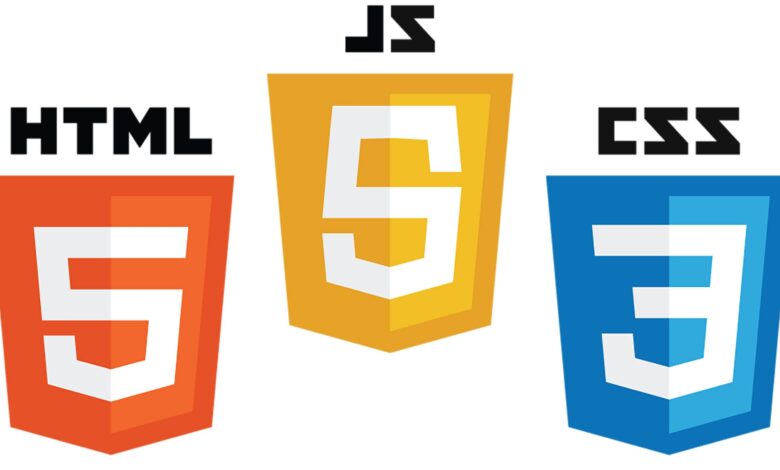Explain the difference between HTML, CSS, and JavaScript.
HTML, CSS, and JavaScript,

Introduction: Understanding the Foundations of Web Development
When we use the internet for various activities like socializing, shopping, learning, and more, rarely do we stop to consider the intricate details of the processes that allow us to do these activities seamlessly. The web as we know it is made possible through a combination of various technologies and coding languages. Three of these, HTML, CSS, and JavaScript, form the bedrock of Web Development. This article is designed to give a comprehensive understanding of these foundational technologies.
HTML: The Backbone of All Websites
HTML, an acronym for Hyper Text Markup Language, is a standard markup language used for creating web pages. It is the backbone of any webpage you visit. HTML provides the basic structure of the site, which is then enhanced and modified by other technologies like CSS and JavaScript. HTML consists of a series of elements which are used to enclose, or wrap, different parts of content to make them appear or act in a certain way. Regardless of the complexity of a website, HTML forms the skeletal structure of the webpage, making it an essential part of web development.
CSS: Styling and Beautifying the Web
CSS, which stands for Cascading Style Sheets, is a style-sheet language used for describing the look and formatting of a document written in HTML. Think of CSS as the designer of the website. CSS enhances HTML, giving it life and personality. This language gives you great control and flexibility over your website’s visual aspects. You could alter colours, change fonts, or even manipulate layout properties like width, height, and margins. CSS plays a vital role in a website’s user experience and overall aesthetics.
JavaScript: Bringing Interactivity to The Web
JavaScript is the programming language that makes websites interactive. While HTML and CSS are languages that give structure and style to web pages, JavaScript gives web pages interactive elements that engage a user. This could mean anything from simple things like handling a click event on a button, to more complex tasks like rendering 2D and 3D graphics. Technologies like AJAX, which allow for updating of content complete without refreshing, have JavaScript at their core. Indeed, JavaScript plays an essential role in enhancing user experience on the web.
Comparing HTML, CSS and JavaScript: Their Roles and How They Work Together
By now, you likely understand that HTML, CSS, and JavaScript are responsible for different aspects of a webpage. However, their real power is manifested in how they work together. HTML lays down the structure, CSS sprinkles it with style, and JavaScript adds action and behavior. They are the three layers of web design and development.
An ideal analogy would be building a house. HTML would be the bricks and mortar that lay the foundation, CSS would be the paint and the decor that enhances the house’s look, and JavaScript would be the electricity that powers appliances and provides light. Each layer, or language, is dependent on the others to create a fully functional, beautifully designed, interactive website.
It’s essential for every web developer to understand these foundational technologies and how they work together. This understanding will help to craft seamless, user-engaging web experiences.ment
When we use the internet for various activities like socializing, shopping, learning, and more, rarely do we stop to consider the intricate details of the processes that allow us to do these activities seamlessly. The web as we know it is made possible through a combination of various technologies and coding languages. Three of these, HTML, CSS, and JavaScript, form the bedrock of Web Development. This article is designed to give a comprehensive understanding of these foundational technologies.
HTML: The Backbone of All Websites
HTML, an acronym for Hyper Text Markup Language, is a standard markup language used for creating web pages. It is the backbone of any webpage you visit. HTML provides the basic structure of the site, which is then enhanced and modified by other technologies like CSS and JavaScript. HTML consists of a series of elements which are used to enclose, or wrap, different parts of content to make them appear or act in a certain way. Regardless of the complexity of a website, HTML forms the skeletal structure of the webpage, making it an essential part of web development.
CSS: Styling and Beautifying the Web
CSS, which stands for Cascading Style Sheets, is a style-sheet language used for describing the look and formatting of a document written in HTML. Think of CSS as the designer of the website. CSS enhances HTML, giving it life and personality. This language gives you great control and flexibility over your website’s visual aspects. You could alter colours, change fonts, or even manipulate layout properties like width, height, and margins. CSS plays a vital role in a website’s user experience and overall aesthetics.
JavaScript: Bringing Interactivity to The Web
JavaScript is the programming language that makes websites interactive. While HTML and CSS are languages that give structure and style to web pages, JavaScript gives web pages interactive elements that engage a user. This could mean anything from simple things like handling a click event on a button, to more complex tasks like rendering 2D and 3D graphics. Technologies like AJAX, which allow for updating of content complete without refreshing, have JavaScript at their core. Indeed, JavaScript plays an essential role in enhancing user experience on the web.
Comparing HTML, CSS and JavaScript: Their Roles and How They Work Together
By now, you likely understand that HTML, CSS, and JavaScript are responsible for different aspects of a webpage. However, their real power is manifested in how they work together. HTML lays down the structure, CSS sprinkles it with style, and JavaScript adds action and behavior. They are the three layers of web design and development.
An ideal analogy would be building a house. HTML would be the bricks and mortar that lay the foundation, CSS would be the paint and the decor that enhances the house’s look, and JavaScript would be the electricity that powers appliances and provides light. Each layer, or language, is dependent on the others to create a fully functional, beautifully designed, interactive website.
It’s essential for every web developer to understand these foundational technologies and how they work together. This understanding will help to craft seamless, user-engaging web experiences.




